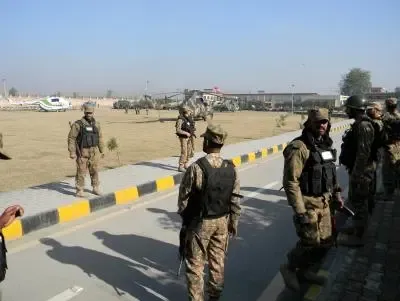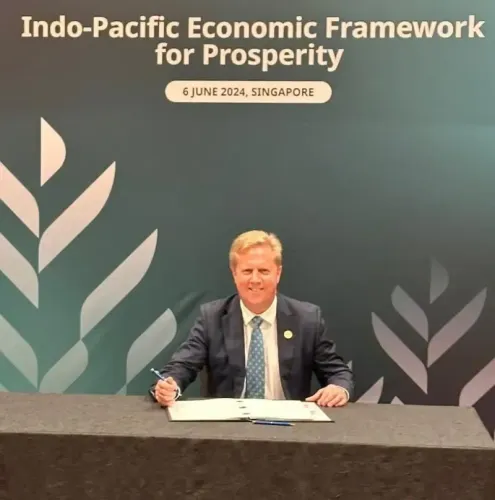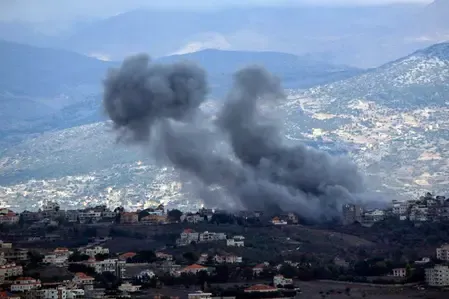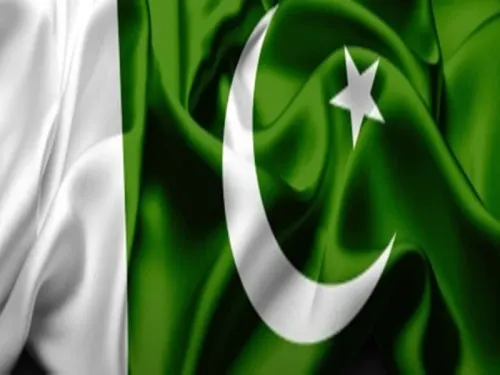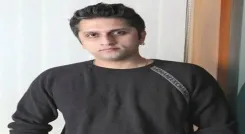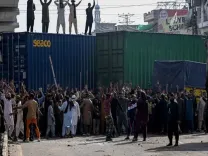Is Hindi Now the Language of Global Communication?
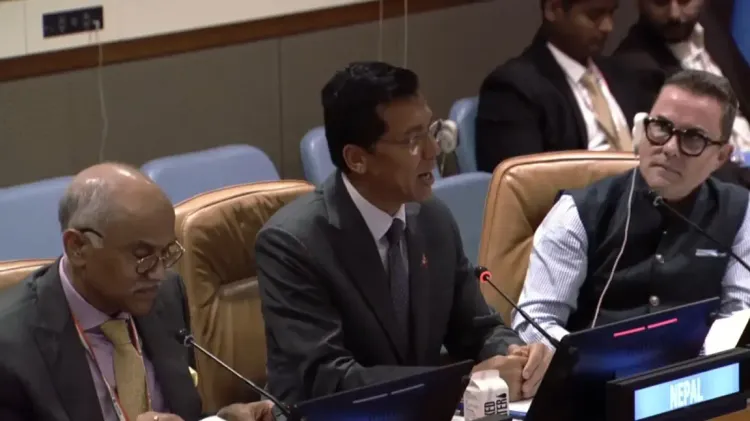
Synopsis
Key Takeaways
- Hindi is increasingly recognized as a global language.
- Social media and education are key drivers of Hindi's popularity.
- Hindi fosters cultural exchange and understanding across nations.
- The UN plays a significant role in promoting Hindi through its initiatives.
- Hindi reflects India's rich cultural identity on the global stage.
United Nations, Oct 10 (NationPress) “Hindi has emerged as the language of global communication”, propelled by social media, yoga, and international educational initiatives, stated BJP MP PP Chaudhary.
During the Hindi Diwas celebration on Thursday, Chaudhary noted, “In the current digital era, Hindi continues to exert its influence worldwide.”
“Hindi transcends mere words; it embodies the essence, identity, and unity of India. It is the thread weaving together the fabric of our nation from north to south and east to west,” he elaborated.
Chaudhary highlighted that “the global utilization of Hindi is on the rise.”
Diplomats from various countries with significant Indian communities shared insights on the role of Hindi in their cultures during the meeting.
He mentioned that Hindi is actively taught and utilized in everyday life across nations such as Mauritius, Nepal, Sri Lanka, Suriname, Fiji, and Guyana, with the World Hindi Secretariat in Mauritius playing a crucial role in its promotion.
The United States, he noted, hosts a large Hindi-speaking population, with institutions like Harvard, Columbia, Cornell, Chicago, and Texas offering Hindi language courses.
India’s Permanent Representative P Harish remarked, “Although our nation is home to 22 officially recognized languages and countless dialects, Hindi occupies a unique status in our diverse linguistic landscape.”
He further added, “Hindi has become a symbol of India’s rich cultural tapestry and has crossed geographical boundaries to become a widely spoken language globally, thanks to our diverse diaspora, the success of Bollywood, and our literature.”
Economic and Social Council President Lok Bahadur Thapa, also Nepal’s permanent representative, stated, “Hindi and Nepali share common linguistic roots, evolving from Sanskrit, and utilize the same Devanagari script, with Hindi widely spoken in Nepal.”
He described Nepal as “a multi-lingual, multi-ethnic, multi-religious, and multicultural nation.” He added, “Our ethos of unity in diversity and peaceful coexistence has endured through millennia.”
Nanette Braun, Chief of the UN’s Communications Campaigns Service, mentioned, “Hindi ranks as the world’s third most spoken language (following English and Mandarin), serving as a powerful medium that connects varied perspectives and acts as a significant voice in global discussions.”
She noted that as part of its multilingual outreach, the UN launched Hindi social media platforms in 2018, followed by the Hindi News website in January 2019.
According to her, “The UN News Hindi website has received approximately 346,000 views from 193,000 active followers over the past year.”
Joan Forner Rovira, Andorra's permanent representative, mentioned that his country, in collaboration with the Dominican Republic, initiated the Group of Friends of Multilingualism during last month’s high-level General Assembly meeting.
Andorra, where three languages are spoken, has been “deeply committed to linguistic diversity”, co-sponsoring the multilingualism resolution for about eight years.
The previous resolution emphasizes that multilingualism is “a fundamental value” of the UN, urging the Department of Global Communications “to continue disseminating original content in Hindi, alongside the six official UN languages, Kiswahili, and Portuguese.”
Landry Sinomana, the First Counsellor at Burundi’s UN Mission, shared parts of his address in Hindi, highlighting that languages build bridges and foster deeper understanding of a nation.
He mentioned that learning to write in Hindi and Sanskrit provided him with an insider’s perspective on India.
Trishala Persaud, Guyana’s Deputy Permanent Representative, noted that while the diaspora retains various traditions from India, the colonial emphasis on English has led to a decline in Hindi fluency.
However, many Hindi words and their local derivatives have been “woven into Guyana's rich cultural tapestry, forming what we refer to as Guyanese Creole.”
Neil Nadesh Parsan, Trinidad’s Permanent Representative, proclaimed, “Hindi is poetry, history, and emotion intricately woven into the essence of Indian identity. It transcends borders, uniting millions through literature, cinema, music, and daily dialogue.”
Milan J.N. Meetarbhan, Mauritius’ Permanent Representative, shared that researchers studying ancient wedding rituals in Bihar and Uttar Pradesh have traveled to Mauritius, where these traditions have been preserved over the last 150 years.
Those who migrated as indentured laborers brought copies of the Ramayana, which continues to be studied by the youth, as their ancestors established “baitkas,” evening schools where Hindi was taught.
Sunil Algram Sitaldin, Suriname’s Permanent Representative, remarked that his country is unique in the Western Hemisphere because Hindi “has been preserved over five generations, serving not only as a communication tool but also as a vital component of religion and culture.”
He noted that the language has “evolved into what we term Sarnami Hindi,” shaped by local influences and generations of cultural exchange.

